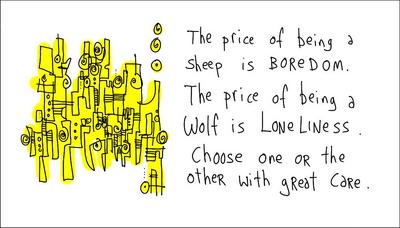Unlocking Consistent Sales Growth: The Flywheel vs. The Roulette Wheel
The number of salespeople hitting their goals has steadily declined since 2016. Why? What could be the cause this sales problem and how can we help salespeople strategically grow revenue and profits? The difference between sustained growth through sales effectiveness and sporadic sales success that I refer to as “random acts of sales” often boils down to the strategy driving your sales efforts. At the heart of this distinction lies two fundamental approaches: the sales flywheel and the sales roulette wheel. Understanding which one your business operates on can make all the difference in achieving consistent and scalable sales growth and rollercoaster revenue.
The Sales Flywheel: Momentum in Motion, Creating Sales Velocity
Working with CEOs we often here something that sounds like this…”Why can’t sales run like my manufacturing facility? We adjust and have predictable outcomes? Sales feels more like some dark art than a science.” Imagine your sales process as a well-oiled machine, where every action feeds into the next, creating a perpetual motion of growth truly building sales velocity. This is the essence of the sales flywheel. Coined by Jim Collins in his book “Good to Great,” the flywheel represents a strategic approach focused on building momentum through continuous improvement and customer-centricity.
Do you have a sales Flywheel or a Roulette wheel?
Here’s how to recognize if you have a sales Flywheel in Motion creating Sales Velocity
Customer-Centricity
Your sales efforts prioritize understanding and meeting the needs of your customers. Every interaction aims to add value and build lasting relationships, leading to repeat business and referrals. Your team has done voice of customer research and you know how customers buy, what they need to buy and their buying process. You know current market challenges your customers face, and we have trained your salespeople to have value-based messaging to sell based on the value you deliver and not the cost to produce.
Feedback Loop
Your sales process incorporates feedback from customers, sales representatives, and market trends. This loop of continuous improvement allows you to adapt quickly to changing circumstances and refine your approach over time. You have a CRM, and your team is logging insightful data and next steps. You reach out to your customers frequently with satisfaction interviews and address the issues that arise.
Scalability
As your business grows, so does the efficiency of your sales process. Scalability is built into the core of your strategy, enabling you to handle increased demand without sacrificing quality or customer experience. Each department understands the strategic plan, they discuss it with a regular meeting cadence, and you have identified key performance indicators to track leading and lagging activities.
For example, I am often asked to help manufacturers grow more than 20% year over year. Fixing sales problems , training, and coaching the team will often produce the sales and increased profits, but can your operations meet the demand? Growth takes cash. Do you have access to cash to support your growth? Do you have the right people in the right roles to execute best in class customer service as you grow?
Data-Driven Decision Making
Analytics and data play a central role in guiding your sales efforts. By leveraging insights from metrics such as conversion rates, customer lifetime value, and sales cycle length, you can make informed decisions to optimize performance. We no longer can lead teams based on how we have always done things around here or just gut and intuition. Most teams are swimming in an ocean of data so we must determine the data we need and deliver real time actionable insights with data dashboards.
Team Alignment
Your sales team is aligned around a shared vision and strategy. Everyone understands their role in the larger process and collaborates seamlessly to drive results. Your sales team is aligned, they know their value drivers and have been trained to communicate value to the various decision-making personas they help each day. Marketing, Accounting, Purchasing, Operations, Human Resources, IT are all aligned and there is no interdepartmental drama because everyone is focused on the same end goal, and they work together. You have a team that trusts each other all the way up to the senior leadership team and when a constraint occurs, they focus on the problem not people.
The sales flywheel is obviously what high growth teams strive for, but what are signs you have a sales roulette wheel?
The Sales Roulette Wheel: Relying on Chance, Luck and Random Acts of Sales
Contrastingly, the sales roulette wheel represents a haphazard approach characterized by short-term thinking, inconsistency, and reliance on luck rather than strategy. While occasional wins may occur, sustained growth is elusive, unpredictable, and quite frankly frustrating and emotionally draining.
Here are ten signs that your sales process resembles a roulette wheel:
1.Reactive Approach: Rather than proactively engaging with customers and prospects, your sales team reacts to opportunities as they arise, often without a clear strategy or direction.
2.Inconsistent Performance: Sales results fluctuate wildly from month to month, with no discernible pattern or trend. Success feels more like luck than the result of a deliberate effort.
3.Lack of Customer Focus: Customer needs and preferences are an afterthought, leading to churn and missed opportunities for upselling or cross-selling.
4.Limited Feedback Loop: There is little emphasis on gathering and acting upon feedback. As a result, mistakes are repeated, and opportunities for improvement are overlooked.
5.Short-Term Thinking: The focus is on closing deals at any cost, rather than nurturing long-term relationships or building a sustainable sales ecosystem.
6.Transactional experience: Salespeople wait for and take orders without having any discovery, qualifying, and exploring ways to upsell and cross sell.
7.Lower Than Industry Average Gross Margin: Salespeople are completing transactions based on price and not selling value.
8.CFO Discounts Sales Projections for Board Meetings: The sales team has consistently missed the sales they promised would come in. This has happened so frequently your CFO discounts the future months sales projects by as much as 50%.
9.Low customer Satisfaction Scores: Customers feel buying from your team is a transaction and they are willing to buy from others based on service time or a slightly lower price.
10.You have lost one or more of Your Top Performing Salespeople in the Last 12 months: Top performing salespeople leave roulette wheel environments.
OK, so you have discovered you may have a sales roulette wheel when you thought you had a sales flywheel building sales velocity each month?
How can your team Transition from Roulette to Flywheel and make the Strategic Shift Selling Based on Value and Science and not some Dark Art?
If your sales process resembles more of a roulette wheel than a flywheel, fear not.
Transforming your approach requires a deliberate shift in mindset and strategy skills of salespeople and skills of sales leaders.
How to start improving your results?
Focus on Customer Value
Make customer-centricity a priority at every stage of the sales process. Listen to feedback, anticipate needs, and deliver exceptional value to build trust and loyalty.
Assess your Sales Skills, Processes Motivations and Beliefs
Understand the current state of your sales teams’ skills, beliefs, and motivations.
Invest in Training and Development
Equip your sales team with the skills and resources they need to succeed. Provide ongoing training and support to foster a culture of continuous learning and improvement.
Embrace Technology
Leverage sales automation tools, CRM software, and data analytics to streamline processes, gain insights, and drive informed decision-making.
Set Clear Goals and Metrics
Establish clear, measurable objectives for your sales team and track progress against key performance indicators. Regularly review results and adjust strategies as needed to stay on course.
Cultivate a Growth Mindset
Encourage experimentation, innovation, and calculated risk-taking within your sales team. Celebrate successes, learn from failures, and continuously iterate to drive growth.
In conclusion, the distinction between a sales flywheel and a sales roulette wheel lies in the strategic approach underlying your sales efforts.
By embracing the principles of the flywheel—customer-centricity, continuous improvement, and scalability—you can unlock the secret to consistent and sustainable sales growth. So, take a step back, evaluate your current approach, and make the strategic shifts necessary to propel your sales engine forward on the path to success.
If you want to have great board meetings focused on how will we support sales and profit growth and not about why did we miss your sales plan…again, we recommend developing your sales flywheel.














